- Call us: 01444 237070
- Contact Us
- Stores
- Sign In / Register
-
- Back
- Used Cameras
- Used Accessories
- Used Lenses
- Used Video
- Used Film Equipment
- Used Stock Alert
- Used Blank Test
- Sell or Part Exchange
- Used Clearance
- Recently Added Used Equipment
- Park Picks
- All Used Black Friday Deals
- Faulty
- Trade-In
- Blog
- New in
- Call us
- Contact us
- Stores
- Sign in
- Categories
- Tips & Inspiration
- Reviews
- News
- Events
- Features
- Buying Guides
- Competitions
Canon Pro RF Super Telephoto Lenses
The wait is over for Canon’s RF 600mm f/4L IS USM and RF 400mm f/2.8L IS USM pro RF super telephoto lenses for the EOS R mirrorless system. In this post we compare these native primes with their EF counterparts and have a hands on first look video.
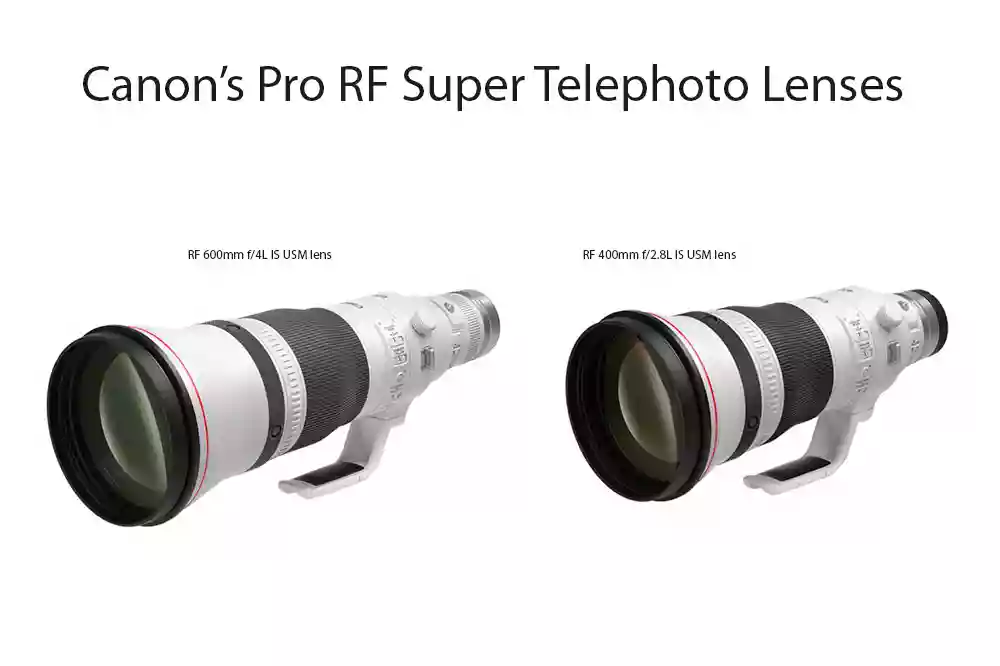
Introduction to the RF Super Telephoto Lens Duo
If you’re an enthusiast or professional sports, wildlife or action photographer, the wait for Canon’s large aperture super telephoto primes has been a nail biting one. Yes we can convert EF equivalent lenses onto the EOS R system and yes there are two f/11 super tele primes, but now we have native mirrorless options with the highest image quality available.
Accomplished as they are Canon’s more entry level f/11 RF 800mm and f/11 RF 600mm rely on bright lighting conditions to really shine (you can read about these and the RF 100-500mm lenses in our blog here). Photographers who shoot indoor events or encounter less than perfect light outdoors can breathe a sigh of relief after Canon announced these pro RF super telephotos. Primes at this quality don’t come cheap, but they do deliver outstanding results comparable to their equivalent EF lenses. With Euro 2020 and the Summer Olympics both postponed until 2021 these could not come at a better time for pro sports shooters, particularly as the EOS R5 and R6 cameras have been flexing their Dual Pixel AF muscles with excellent results.
Similarities With EF Equivalent Pro Lenses
There are a lot of similarities between the new RF 600mm f/4L and RF 400mm f/2.8L lenses with their equivalent EF models. Canon has shaved a few grammes off the RF 400mm f/2.8L to make it the lightest in its class, despite being a hair longer than the EF 400mm. The table below demonstrates these similarities between these two, with the first RF version pitched against the third EF iteration.
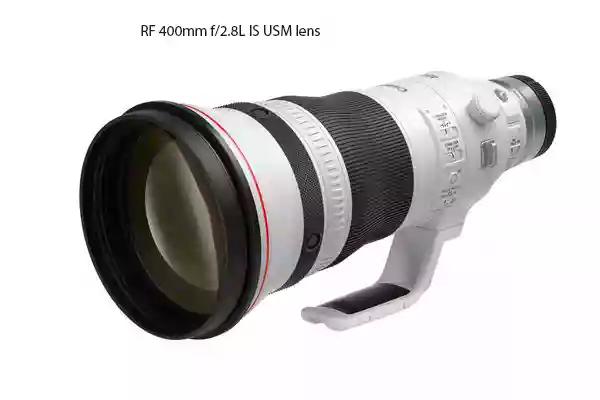
Canon RF and EF 400mm Pro Lenses Compared
|
|
||
|
Lens configuration |
17/13 |
17/13 |
|
Aperture blades |
9 |
9 |
|
Max aperture |
f/2.8 |
f/2.8 |
|
Min focusing distance |
2.5m |
2.5m |
|
Max magnification |
0.17 |
0.17 |
|
Optical IS |
5-stops |
5-stops |
|
Filter size |
52mm drop-in |
52mm drop-in |
|
Extender support |
YES EF 1.4x III and EF 2.0x III |
|
|
Size (diameter x length) |
163 x 367mm |
163 x 343mm |
|
Weight |
2,881g |
2,840g |
It is a very similar story with the 600mm versions, although in this case the newer RF is a hair longer and heavier than its EF counterpart.
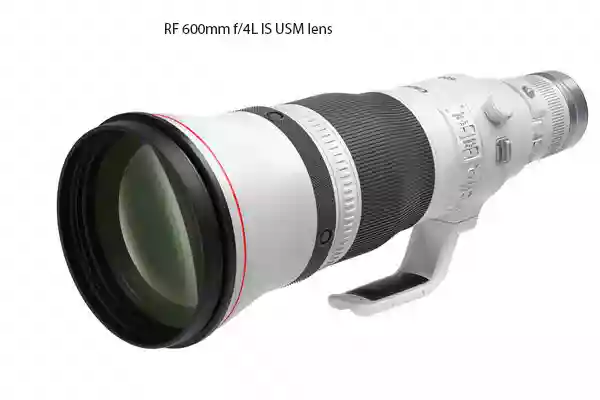
Canon RF and EF 600mm Pro Lenses Compared
|
|
||
|
Lens configuration |
17/13 |
17/13 |
|
Aperture blades |
9 |
9 |
|
Max aperture |
f/4 |
f/4 |
|
Min focusing distance |
2.5m |
4.2m |
|
Max magnification |
0.15 |
0.15 |
|
Optical IS |
5-stops |
5-stops |
|
Filter size |
52mm drop-in |
52mm drop-in |
|
Extender support |
YES EF 1.4x III and EF 2.0x III |
|
|
Size (diameter x length) |
168 x 472mm |
168 x 448mm |
|
Weight |
3,090g |
3,050g |
The big differences for photographers are the native RF mount, compatibility with native RF Extenders and of course these are optimised for the shorter distance between the lens mount and camera sensor. Whilst we have marked a 5-stop IS for the newer RF models this is according to CIPA tests, whilst Canon’s own testing shows an advantage of up to 5.5-stops.
Another difference to note is that the RF primes both have a Dual Power Focus Drive. This is more than marketing speak and is a clever system which draws extra current from a compatible camera body to drive the ring-type USM focusing drive. This results in faster AF all round, complementing Canon’s Dual Pixel AF system perfectly.
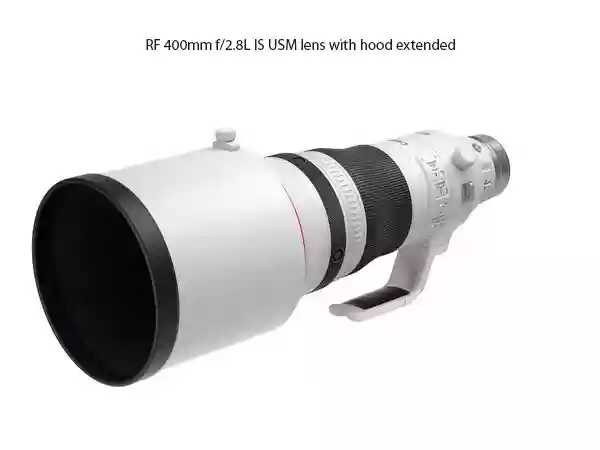
Image quality
If it ain’t broke, why fix it? We can see that Canon has harnessed the tried and tested optical formula from Mark III EF lenses and expect similar excellent image results. Unfortunately these were not available for real world tests at launch, however Canon has stated that the RF super telephoto’s will deliver similar results. Here are the key optical technologies used to deliver image quality:
- 2x Fluorite and 1x Super UD glass are used in the optical design which reduce colour fringing and increase resolution and contrast.
- ASC, Super Spectra coatings reduce ghosting and flare with Canon’s Air Sphere Coating
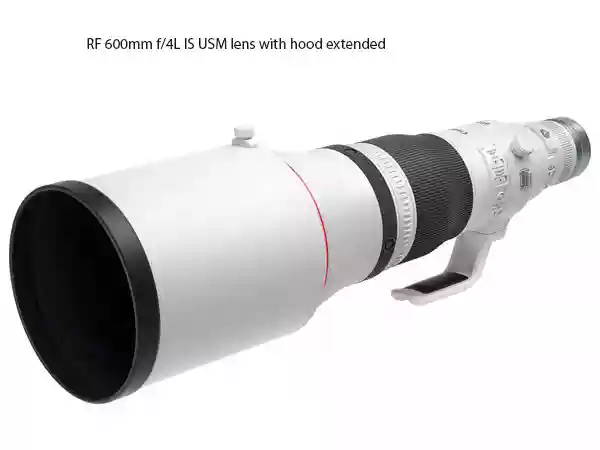
Customisation and handling
For those used to working with larger, heavier prime lenses there won’t be any surprises here. These are both competitive for their class which is good news, and they do feel suitably burly with weights of around 3kg. each. This is still acceptable for hand holding, particularly with their large apertures and effective stabilisation to maintain sharpness. Of course we expect to see some monopods or other support system to be used from time to time depending on shooting situations. All of the subjects suited to these focal lengths which include pap and reportage photographers will be very happy with the overall size and weight of these two options.
Some nice touches which enhance useability include three variable speed manual focusing options as well as full time MF override to fine-tune focus without needing to switch between AF/MF. There are also two well placed focus presets for quick recall which is particularly useful to save time under certain conditions. Videographers get 1/8 stop incremental aperture changes to deliver smooth exposure when light conditions alter.
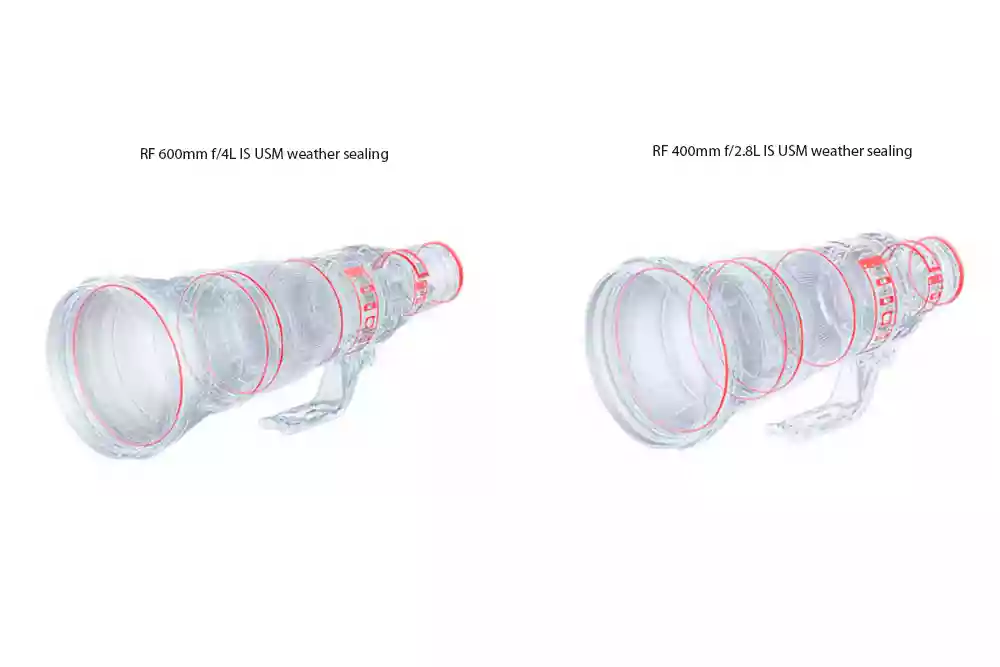
Both the RF 600mm f/4L IS USM and RF 400mm f/2.8L IS USM have rigorous weather sealing applied throughout as shown in these illustrations. Every possible entry point where the elements could be disrupted have been dealt with, including gaskets on the lens mount.
Both lenses also come with deep extending hoods and an oversized L shape tripod foot, which doubles very nicely as a carry handle.
Video First Look - Canon RF 400mm f/2.8L IS Lens and RF 600mm f/4L IS Lens
Summary
We are thrilled to see Canon launch these two Pro RF Super Telephoto Lenses to extend their line-up for mirrorless photographers. Having native pro primes of this calibre should convince any pro users that Canon is not turning back from developing the EOS R system. Those who have already switched can now get their hands on native focal lengths up to 1200mm at the brightest aperture available to nail their images.
Anyone shooting macro or 100mm portraits will also be interested our RF 100mm f2.8L Macro Lens Review looking at some world class features on this lens which was launched at the same time. There’s no turning back now with RF lens gaps being filled right before our very eyes.
If these two new pro lenses aren’t exciting enough already, wait till you hear about the development announcement for the new EOS R3 camera. It’s all good news for pro Canon shooters at the moment with an awful lot going on to get really pumped about.
Share this post:
By Nick Dautlich on 14/04/2021
Nick Dautlich
Senior Content Writer and Product Reviewer
Nick Dautlich is the Senior Content Writer and Product Reviewer at Park Cameras, with over 15 years of photography experience. A Sony Imaging Professional and expert reviewer, Nick has worked with major brands such as Canon, Sony and Nikon. His work is also featured on Vanguard World UK’s website, Capture Landscapes, and Shutter Evolve. Nick’s photography includes National Trust projects and magazine covers and he is passionate about landscapes and storytelling. Nick also enjoys hiking and teaching his children about nature. Learn more on his profile page.

Trade in your old equipment
Fast and easy trade in service ensures your old gear is collected efficiently and you are paid quickly! It's very simple to trade in your unwanted photography gear. Just head over to our dedicated Sell or Part Exchange page, fill out the details, and we'll get back to you with an offer for your old gear. Take the cash, or put it towards the cost of your new gear. It's up to you! Find out more
sign up to the newsletter
Keep up to date on the latest photography news, events and offers. Sign up now
